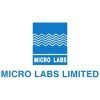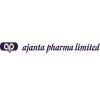
i
Filter interviews by
BDR Pharmaceuticals International QC Executive Interview Questions, Process, and Tips
BDR Pharmaceuticals International QC Executive Interview Experiences
1 interview found
I applied via Walk-in and was interviewed before Jan 2023. There were 3 interview rounds.
(9 Questions)
- Q1. What is R. S in HPLC?
- Ans.
R. S in HPLC stands for Relative Standard Deviation.
R. S is a measure of the precision or reproducibility of an HPLC method.
It is calculated by dividing the standard deviation of peak areas by the average peak area and multiplying by 100.
R. S is expressed as a percentage and indicates the variability of peak areas in replicate injections.
A lower R. S value indicates higher precision and better method performance.
For ex...
- Q2. What is assay by HPLC and ehy perform?
- Ans.
Assay by HPLC is a technique used to separate, identify, and quantify components in a sample.
HPLC stands for High-Performance Liquid Chromatography.
It is commonly used in pharmaceutical and chemical industries for quality control purposes.
Assay by HPLC involves injecting a sample into a high-pressure liquid chromatography system, where the components are separated based on their interactions with the stationary phase.
T...
- Q3. What is resolution?
- Ans.
Resolution refers to the ability to distinguish between two separate points or objects in an image or display.
Resolution is a measure of the level of detail in an image or display.
It is typically measured in terms of pixels or dots per inch (DPI).
Higher resolution means more pixels or dots, resulting in a clearer and sharper image.
Resolution is important in various fields such as photography, video production, and disp...
- Q4. How calibration of karl fisher?
- Ans.
Calibration of Karl Fischer is a process to ensure accuracy and reliability of the moisture determination method.
Calibration involves verifying the performance of the Karl Fischer titration system.
It includes checking the accuracy of the reagents, electrodes, and the instrument itself.
Calibration is typically done using standard solutions with known moisture content.
The instrument readings are compared to the expected ...
- Q5. How calibration of HPLC?
- Ans.
Calibration of HPLC involves verifying the accuracy and precision of the instrument by comparing the results obtained with known standards.
Calibration of HPLC is essential to ensure accurate and reliable results.
It involves preparing a series of standard solutions with known concentrations of analytes.
These standard solutions are then injected into the HPLC system and the peak areas or heights are measured.
The obtained...
- Q6. How prepared 1.0 N NaoH solution?
- Ans.
To prepare a 1.0 N NaOH solution, dissolve 40.0 g of NaOH in enough water to make 1 liter of solution.
To prepare a 1.0 N NaOH solution, you need to know the molar mass of NaOH (40.0 g/mol).
Calculate the number of moles of NaOH required using the formula: moles = N x volume (in liters).
For a 1.0 N solution, the number of moles of NaOH is equal to the desired concentration (1.0 mol/L).
Weigh 40.0 g of NaOH using a balance...
- Q7. What is molecular weight of HNO3?
- Ans.
The molecular weight of HNO3 is 63.01 g/mol.
The molecular weight of a compound is the sum of the atomic weights of all the atoms in its chemical formula.
For HNO3, the atomic weight of hydrogen (H) is 1.01 g/mol, nitrogen (N) is 14.01 g/mol, and oxygen (O) is 16.00 g/mol.
Multiplying the atomic weights by the number of atoms in the formula (1 hydrogen, 1 nitrogen, and 3 oxygen) and summing them gives the molecular weight
- Q8. What is molecular weight of ACETIC ACID?
- Ans.
The molecular weight of acetic acid is 60.052 g/mol.
The molecular weight of a compound is the sum of the atomic weights of all the atoms in its chemical formula.
The chemical formula of acetic acid is CH3COOH.
The atomic weights of carbon (C), hydrogen (H), and oxygen (O) are 12.01 g/mol, 1.008 g/mol, and 16.00 g/mol respectively.
Calculating the molecular weight of acetic acid: (12.01 * 2) + (1.008 * 4) + 16.00 + 1.008 =
- Q9. Did you now about T. L. C crometography?
(2 Questions)
- Q1. Why you leave your present company
- Q2. What is your expectations
(1 Question)
- Q1. How many months notice period
Top trending discussions






Interview questions from similar companies

I applied via Naukri.com and was interviewed before Aug 2020. There were 4 interview rounds.
Interview Questionnaire
5 Questions
- Q1. Flows of Validation
- Ans.
Flows of Validation refers to the process of verifying and confirming the accuracy and integrity of data or information.
Flows of Validation involve checking data for errors, inconsistencies, and completeness.
Validation can be done through various methods such as data sampling, cross-referencing, and data reconciliation.
Examples of validation processes include validating financial transactions, validating user input in ...
- Q2. What is the mean of Direct impact and No impact systems
- Ans.
The mean of Direct impact and No impact systems is undefined.
Direct impact and No impact systems are not comparable in terms of impact.
Direct impact systems have a significant impact on the organization or process, while No impact systems have no impact.
Therefore, calculating the mean of these two types of systems is not meaningful.
It is important to evaluate the impact of each system separately and make decisions acco
- Q3. If set values of parameters affects to the product quality then it is a direct impact ; if does not affect then called non impact
- Ans.
The impact of set values of parameters on product quality
Set values of parameters can have a direct impact on product quality
If the set values do not affect the product quality, it is considered non-impactful
Examples of parameters that can affect product quality include temperature, pressure, and time
Proper calibration and monitoring of parameters can ensure consistent product quality
- Q4. What is the purpose Risk assessment?
- Ans.
Risk assessment is the process of identifying, analyzing and evaluating potential risks to an organization or project.
Helps in identifying potential risks and their impact
Enables prioritization of risks based on their severity
Assists in developing strategies to mitigate or manage risks
Provides a framework for decision-making and resource allocation
Examples: financial risk assessment, cybersecurity risk assessment, proj
- Q5. The aim of the risk assessment process is to evaluate the hazards then minimize the level of its risk by adding control measures.
Interview Preparation Tips

I applied via Campus Placement and was interviewed before Nov 2020. There were 3 interview rounds.
Interview Questionnaire
2 Questions
- Q1. What are salary expecations?
- Q2. Will you sign bond?
Interview Preparation Tips

I applied via Walk-in and was interviewed before Jan 2019. There were 3 interview rounds.
Interview Questionnaire
1 Question
- Q1. The vacancy was for Autoclave and brevetti (automatic inspection machine). So I was asked about everything for those 2 machines (qualifications, validation, guidelines, what to do in case of malfunctioning...
Interview Preparation Tips

I applied via Naukri.com and was interviewed in Jul 2020. There were 3 interview rounds.
Interview Questionnaire
2 Questions
- Q1. Technical questions based on my CV
- Q2. Family background questions, Strengths , Weakness , How are you working on your weakness, Behavioural and situation based questions .
Interview Preparation Tips
Have an attitude of" I know I will crack this job interview with universe help" Don't observe more on how to behave. Just be as you are.
Finally be grateful for the opportunity even if you get selected or rejected.

I applied via Walk-in and was interviewed in Oct 2020. There were 3 interview rounds.
Interview Questionnaire
2 Questions
- Q1. About Gamp5 guidelines
- Q2. About qualifications and validations and CSV
Interview Preparation Tips

I applied via Naukri.com and was interviewed before Jun 2021. There were 2 interview rounds.
(1 Question)
- Q1. Basic Questions related to Instrumentation
(1 Question)
- Q1. Relevant field questions and related to Pharma equipment
Interview Preparation Tips
- Instrumentation
- Automation
- Information Technology

I applied via Company Website and was interviewed in Mar 2023. There were 5 interview rounds.

(1 Question)
- Q1. Questions was based on job description
(1 Question)
- Q1. Basic questions about the company and candidate personality
(1 Question)
- Q1. Interview with dept head
Basic aptitude questions and answer.

I applied via Referral and was interviewed in Mar 2022. There were 4 interview rounds.

(1 Question)
- Q1. 1. Introduce yourself ? 2. What's your goals in life ? 3. What's your salary expectations ?
(1 Question)
- Q1. 1. When system lose pressure then what are doing ? 2. How many types of Dissolution ?
- Ans.
Answering questions related to system pressure and types of dissolution.
When a system loses pressure, it needs to be re-pressurized to maintain its functionality.
There are two types of dissolution: intrinsic and extrinsic.
Intrinsic dissolution refers to the dissolution of a pure substance, while extrinsic dissolution refers to the dissolution of a substance in a mixture or matrix.
The dissolution rate can be affected by...
Its regarding General knowledge and mathematics.
Interview Preparation Tips
- HPLC
- Change Control
- Sop Preparation
- Capa
- Deviation
- Lab incident

I applied via Walk-in and was interviewed in Mar 2021. There were 3 interview rounds.
Interview Questionnaire
1 Question
- Q1. Total your work experience related
Interview Preparation Tips
BDR Pharmaceuticals International Interview FAQs
Tell us how to improve this page.
BDR Pharmaceuticals International Interviews By Designations
- BDR Pharmaceuticals International Trainee Interview Questions
- BDR Pharmaceuticals International Senior Officer Interview Questions
- BDR Pharmaceuticals International Executive Interview Questions
- BDR Pharmaceuticals International HR Executive Interview Questions
- BDR Pharmaceuticals International Production Interview Questions
- BDR Pharmaceuticals International Assistant Manager Interview Questions
- BDR Pharmaceuticals International Research Scientist Interview Questions
- BDR Pharmaceuticals International Quality Assurance/Quality Control Manager Interview Questions
- Show more
Interview Questions for Popular Designations
- QC Chemist Interview Questions
- QC Officer Interview Questions
- Senior Executive QC Interview Questions
- QC Microbiologist Interview Questions
- Quality Control Officer Interview Questions
- QC Analyst Interview Questions
- QA Officer Interview Questions
- Senior Executive Quality Control Interview Questions
- Show more
BDR Pharmaceuticals International QC Executive Interview Process
based on 1 interview
Interview experience
QC Executive Interview Questions from Similar Companies
BDR Pharmaceuticals International QC Executive Reviews and Ratings
based on 1 review
Rating in categories
|
Officer
153
salaries
| ₹2 L/yr - ₹5.1 L/yr |
|
Senior Officer
136
salaries
| ₹2.8 L/yr - ₹6.6 L/yr |
|
Executive
116
salaries
| ₹3.9 L/yr - ₹8.4 L/yr |
|
Senior Executive
78
salaries
| ₹5.5 L/yr - ₹9.1 L/yr |
|
Assistant Manager
65
salaries
| ₹6.4 L/yr - ₹13.5 L/yr |

Hetero

Abbott

Micro Labs

Ajanta Pharma
- Home >
- Interviews >
- BDR Pharmaceuticals International Interview Questions >
- BDR Pharmaceuticals International QC Executive Interview Questions












